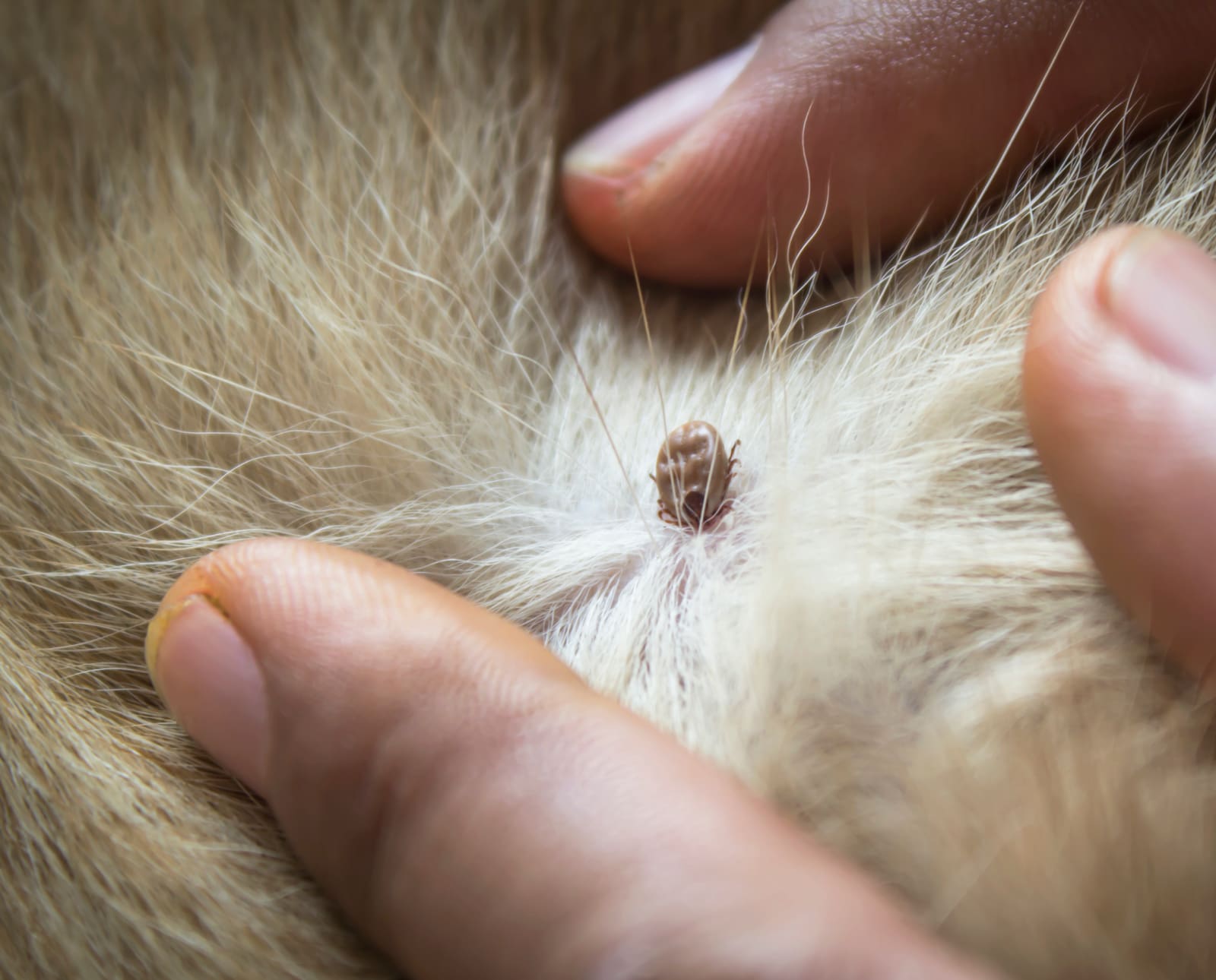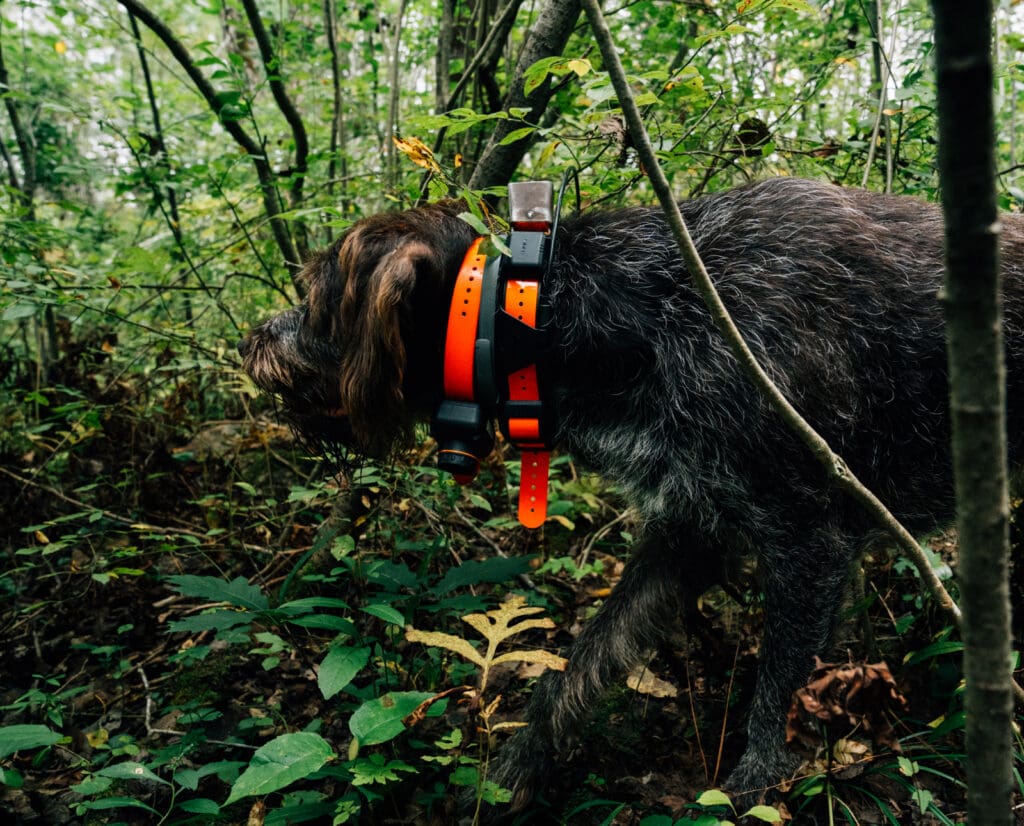Home » Hunting Dogs » Guide To Choosing Flea And Tick Preventatives For Your Dog
Guide To Choosing Flea And Tick Preventatives For Your Dog

Dr. Jay Brekke, DVM has been a veterinarian in Colorado…
Protect your dog from insect-transmitted diseases by learning about the three most common ways to avoid ectoparasites.
One of the most constantly changing topics in the field of veterinary medicine is flea and tick prevention for dogs. Hunting dogs are some of the most exposed and susceptible victims to ectoparasites such as ticks, fleas, mites and other insects. Every year, it is important to purchase preventative products for your dog and to ask your veterinarian what new products are available.
Listen to more articles on Apple | Google | Spotify | Audible
In this article, I will discuss the three different types of preventative products and why they are so important to protect your hunting partner. This includes collars, topical treatments, and oral preventatives.
I highly encourage every dog owner to have this discussion with their veterinarian because insect prevention is a transient part of this field. Remember, it is rarely the insect itself that’s the issue. The parasites that insects transmit through their bites are what cause issues in our dogs.
| Type of Preventative | How Long Does It Last? | Pros | Cons | Cost |
| Collar | 5-7 months | Water resistant, often used in addition to other treatments | Ingredients can be toxic to dogs if ingested, can fall off | $40-80 |
| Topical | ~1 month | Affordable, waterproof after a waiting period | Messy, doesn’t last as long as other options, only repels parasites | $5-60 |
| Oral | 1-3 months | Kills parasites, easy to administer, never affected by bathing/swimming | Can be the priciest option | $30-100 |

Flea and Tick Dog Collars
Flea and tick collars are designed to prevent and control infestations of fleas and ticks by releasing ingredients that kill or repel fleas and ticks. The ingredients to repel parasites are infused into the collars and are slowly released through your dog’s movement and natural oil flow through the skin. The ingredients form a protective layer on the fur and skin, killing or repelling parasites, thereby preventing insects from biting or attaching themselves to your dog.
In today’s market, flea and tick collars are water resistant and can last for five to seven months. Seresto being one of the most popular brands. Most veterinarians recommend collars in highly prevalent areas in addition to other preventative treatments.
Topical “Spot-On” Flea and Tick Treatments
Topical treatments use the same or similar ingredients as flea collars but are directly applied in small, concentrated amounts to a dog’s skin between the shoulder blades. The ingredients are absorbed into the skin and hair follicles, and spread across the skin surface by the dog’s natural oils, repelling flea and ticks. On average, topicals last about a month and are waterproof after a short waiting period.
Topicals are slowly being replaced with oral preventatives due to compliance, efficacy, and safety. However, in certain parts of the country, topical products are still used solely for protection or in combination with an oral chew or collar.

Oral Flea And Tick Preventatives
Oral preventatives are chewable medications that have taken over the market in recent
years. I cannot speak on behalf of all veterinarians as we differ with location and species of parasites present. However, oral preventatives are the most common type of product that I use at my practice and for good reason. Once ingested, the ingredients are absorbed into the dogs bloodstream through the digestive system. When a flea or tick bites the dog, it will ingest the ingredients and die in a short period of time. The ease of administering this product is superior to topicals as it’s a chewable treat and is never affected by bathing or swimming.
One of the most common concerns regarding this treatment is that the parasite must bite in order to ingest the ingredients, which exposes the dog to the possibility of disease transfer. But studies have measured the different speeds, or contact time, that most fleas and ticks take to spread disease. The products with a 98 to 99 percent efficacy rate usually beat the possibility of disease transfer.
Oral flea and tick medications can be given monthly or every three months, like Bravecto, a Merck product.
What Is The Right Flea And Tick Prevention For My Dog?
A common type of question my bird hunting clients ask me is, “I enjoy Minnesota grouse hunting in September and October, but I also go to Arizona for quail in January or February. Which prevention method should I use?” Regardless of where your dog travels each fall, I stick to my same go-to response.
Personally, I don’t care for topicals. I find them ineffective, and they can be oily and messy. Repellent wipes or sprays can be purchased over the counter, provide good protection for your dog, and aren’t as messy as topical preventatives. Pet stores sell these repellent products that you can use daily, just like human bug spray, use to prevent insect bites. For heavily infested areas, I do like the addition of a collar as it is another line of defense to prevent insect bites.
The most important product is the oral preventative. It is the most effective protection to prevent flea/tick disease transmission. Your veterinarian should be consulted to recommend the most effective flea/tick protection based on your location and what insects and diseases are prevalent in your area.
The three treatments I discussed above are designed to disrupt the central nervous system of insects, thereby killing them. Your dog should experience little or no side effects from these treatments. However, like with many medications, side effects are possible and this needs to be discussed with your veterinarian.
Talk To Your Vet About Your Flea/Tick Prevention Options
I cannot emphasize enough the importance of discussing the topic of flea and tick preventative care with your veterinarian. They will know what insects and diseases are most prevalent in your area and what preventative measure will be most effective. If you travel with your dog to other regions of the country, make sure to discuss what different or additional treatments/preventatives might be needed, too. It is very important to avoid the chance of your pet contracting Lyme, E. Canis, Anaplasmosis, Rocky Mountain spotted fever, and other transmittable diseases.
Veterinarians have a wide range of experiences with certain products. We all have favorites and non-favorites, and this can vary with our location, years of practice, and current research. We will always try to recommend the best product for your individual need.
Frequently Asked Question: Why Don’t Flea And Tick Preventatives Exist For Humans?
Now, I’m not a human physician, but my clients ask me the following question quite frequently: Why aren’t flea and tick preventatives offered to humans? After all, we are exposed to diseases just like our hunting dogs.
It’s a great question, and there’s a few considerations as to why no one’s developed a preventative for humans. First of all, humans are mostly covered by skin, not fur. This allows us to see, feel, and repel insects simply because we can detect them so quickly. Our brains also give us the ability to understand that insects populate some areas, like wetlands, more than others. Our thinking, planning, and researching capabilities allow us to avoiding infested areas. We can also choose to use permethrin-infused clothing and permethrin sprays, we can tuck our pant legs into our boot tops, wear long sleeved shirts, and make other choices that prepare us to enter insect-ridden places.
Lastly, the chance of humans ever having a preventative product such as a chew or topical is very unlikely because the studies required to permit the manufacturing of these medications are hard to track and monitor with our long life expectancies. Most of our dogs live for 10 to 12 years, so we can easily perform studies and monitor efficacy and safety to get accurate results that meet the research and development budget for pharmaceutical companies. In other words, it’s cheaper to study a dog for 10 years than it is to study a human for 75.
Dr. Jay Brekke, DVM has been a veterinarian in Colorado for over ten years. He owns the Brekke Veterinary Clinics in Castle Pines and Castle Rock, and runs Altitude Sport Dog Health. He was raised in a hunting and bird dog family. Jay currently owns two German Shorthair Pointers, Gweny and Bizzy.






About a decade ago, I had a pit mix with very light short hair, and sensitive skin, as is common for the breed. Trying multiple options, I found that the topical liquid caused several discomfort, burns, and did not work well at all. For hunting breeds with thick topcoat, topical liquids should be ok, but do watch the skin for problems.
A collar worked extremely well for my dog, and we need er had to use that nasty liquid again. I can’t recommend it for any reason or breed, however others may have better luck.